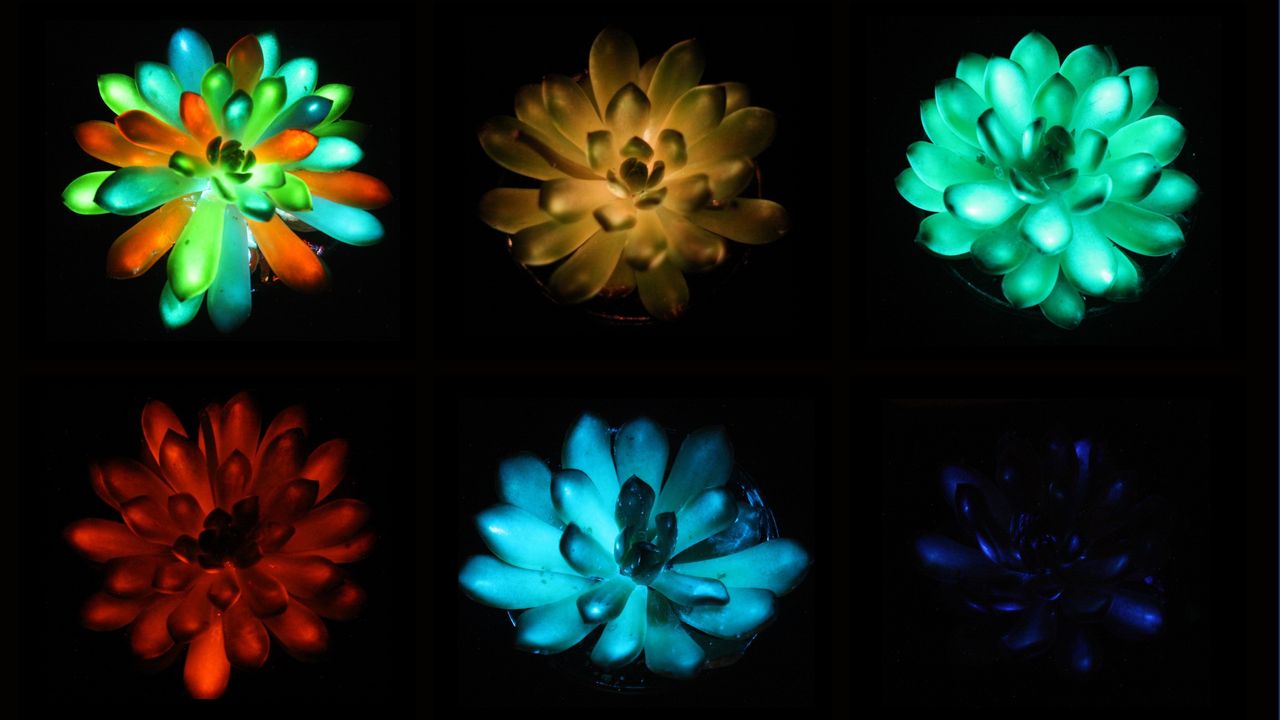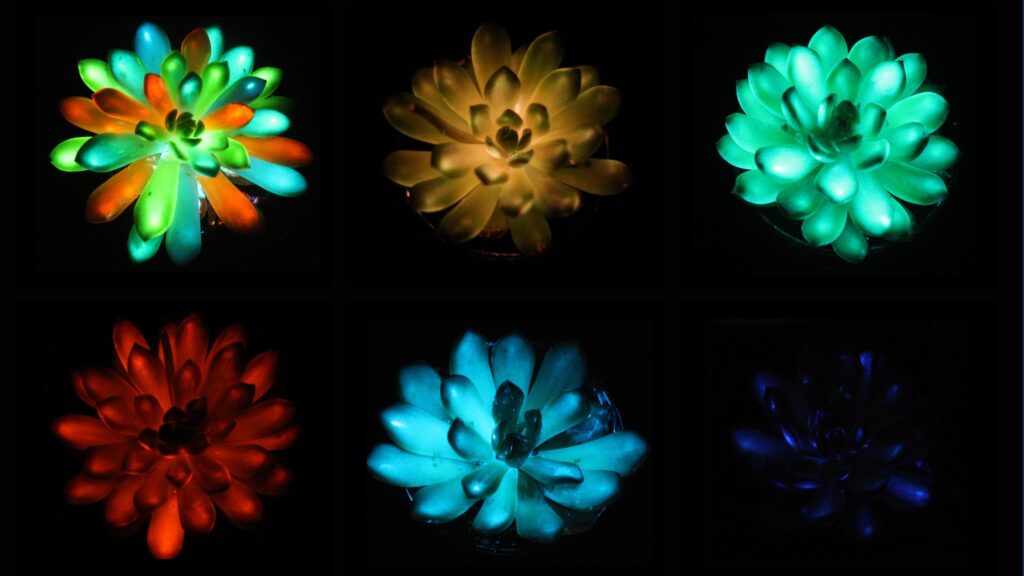
Scientists in China have created rainbow, glow-in-the-dark succulents by injecting colorful “afterglow” particles into the leaves that absorb, and then gradually release, light.
The luminescent succulents shone for up to two hours, outperforming similar, material-engineered plants, according to a new study. The invention paves the way for sustainable, plant-based lighting to illuminate outdoor and indoor spaces, researchers said.
“Imagine glowing trees replacing streetlights,” study lead author Shuting Liu, a researcher at South China Agricultural University, said in a statement. “The particles diffused in just seconds, and the entire succulent leaf glowed.”
Researchers have made glow-in-the-dark plants before, both with genetic engineering and material engineering. Genetic engineering approaches harness bioluminescent genes that already exist in certain plants, such as phytoplankton — but these genes have a limited, mostly green, color range, according to the study. Material engineering techniques involve injecting light-emitting particles into plant leaves to make them glow, but these methods have so far only generated dim light.
For strong luminescence, light-emitting particles have to be small enough to diffuse through a plant’s tissues, but also big enough to emit a visible glow. Previous experiments using nanoparticles derived from firefly luciferase, the enzyme that creates bioluminescence in fireflies, produced only a faint glow that dropped sharply after 30 minutes.
For the new study, Liu and her colleagues used light-emitting phosphor particles that were roughly the width of a human red blood cell (6 to 8 micrometers). The micron-sized particles were large enough to produce a strong glow while traveling through the plants freely, Liu said. “Smaller, nano-sized particles move easily within the plant but are dimmer,” she said.
Related: Scientists invent photosynthetic ‘living’ material that sucks CO2 out of the atmosphere
The researchers published their findings Wednesday (Aug. 27) in the journal Matter.
Micron-sized particles worked for succulents but not for other plants tested in the study, including bok choy (Brassica rapa chinensis) and golden pothos (Epipremnum aureum). The researchers used Echeveria “Mebina” succulents, which have blue-green leaves with red tips. Unlike bok choy and golden pothos, these succulents have relatively large gaps between their cells, meaning that micron-sized particles can travel through the plant, according to the study.
The researchers injected phosphor particles into the leaves of Echeveria “Mebina” and charged the plants in sunlight or indoor LED light for a few minutes, obtaining the same afterglow effect in both experiments. Green particles produced the longest glow, with the plants emitting light for up to 2 hours and rivaling a small night lamp at their brightest, according to the study.
The team produced the world’s first multicolored luminescent plants by injecting blue, green, red and blue-violet phosphor particles into the leaves of some succulents. The scientists also built a plant wall of 56 succulents that produced enough light to see nearby objects and read text in the dark, according to the statement.
“I just find it incredible that an entirely human-made, micro-scale material can come together so seamlessly with the natural structure of a plant,” Liu said. “The way they integrate is almost magical.”
Luminescent succulents could one day be a low-carbon lighting solution, according to the study. The researchers hope to produce the same effect in other plants, which could be exposed to sunlight and charged up like batteries to provide decorative and practical lighting.
“The process is straightforward and cost-effective and achieves luminescence within 10 min, paving the way for practical applications in plant-based lighting,” the researchers wrote in the study.
